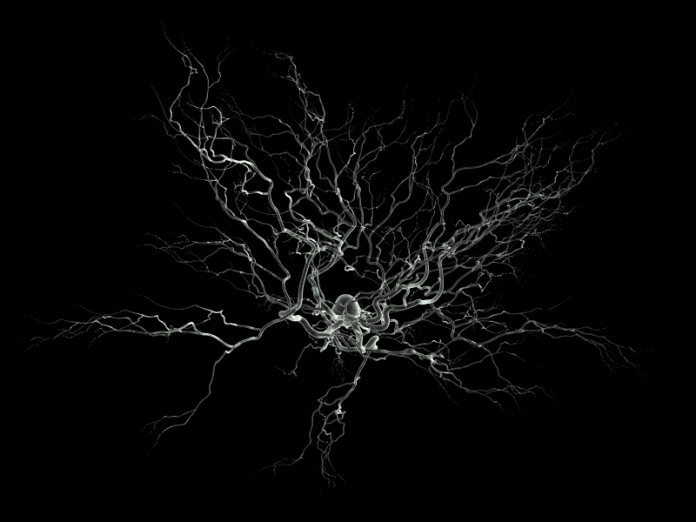Scientists have developed a 3D bioprinting platform that assembles functional 사람의 neural tissues. The progenitor cells in the printed tissues grow to form neural circuits and make functional connections with other neurons thus mimicking natural brain tissues. This is a significant progress in neural tissue engineering and in 3D bioprinting technology. Such bioprinted neural tissues can be used in modelling 사람의 diseases (such as Alzheimer’s, Parkinson’s etc.) caused due to impairment of neural networks. Any investigation of disease of brain requires understanding how the 사람의 neural networks operate.
3D 바이오프린팅 적합한 천연 또는 합성 생체재료(바이오잉크)를 살아있는 세포와 혼합하여 천연 조직과 같은 3차원 구조로 층별로 인쇄하는 첨가 공정입니다. 세포는 바이오잉크에서 성장하고 구조는 자연 조직이나 기관을 모방하도록 발달합니다. 이 기술은 다음 분야에서 응용 분야를 찾았습니다. 재생 medicine for bioprinting of cells, tissues and organs and in research as model to study 사람의 몸 체외에서, 특히 사람의 신경계.
에 대해 공부하다 사람의 nervous system faces limitations due to unavailability of primary samples. Animal models are helpful but suffer from species-specific differences hence the imperative of 체외에서 의 모델 사람의 nervous system to investigate how the 사람의 neural networks operate towards finding treatments for diseases attributed to impairment of neural networks.
휴먼 neural tissues have been 3D printed in the past using stem cells however these lacked neural network formation. The printed tissue had not shown to have formed connections between cells for several reasons. These shortcomings have been overcome now.
In a recent study, researchers chose fibrin hydrogel (consisting of fibrinogen and thrombin) as the basic bioink and planned to print a layered structure in which progenitor cells could grow and form synapses within and across layers, but they changed the way layers are stacked during printing. Instead of traditional way of stacking layers vertically, they chose to print layers next to another horizontally. Apparently, this made the difference. Their 3D bioprinting platform was found to assemble functional 사람의 neural tissue. An improvement over other existing platforms, the 사람의 neural tissue printed by this platform formed neural networks and functional connections with other neurons and glial cells within and between layers. This is the first such case and is a significant step forward in neural tissue engineering. Laboratory synthesis of nerve tissue that mimics brain in function sounds exciting. This progress will certainly help researchers in modelling 사람의 diseases of brain caused due to impaired neural network to better understand the mechanism for finding a possible treatment.
***
참조 :
- 카데나 M., 외 2020. 신경조직의 3D 바이오프린팅. 고급 의료 재료 10권, 15호 2001600. DOI: https://doi.org/10.1002/adhm.202001600
- 얀 Y., 외 2024. 3D bioprinting of 사람의 neural tissues with functional connectivity. Cell Stem Cell Technology| Volume 31, Issue 2, P260-274.E7, February 01, 2024. DOI: https://doi.org/10.1016/j.stem.2023.12.009
***






































